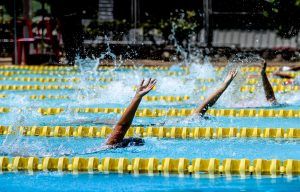
6 Tips for Days When You Really, Really Don’t Feel Like Going to Swim Practice
Going to swim practice feeling like a struggle? Here are some proven strategies and tips to conquer today’s swim practice, even though you might not be feeling it.
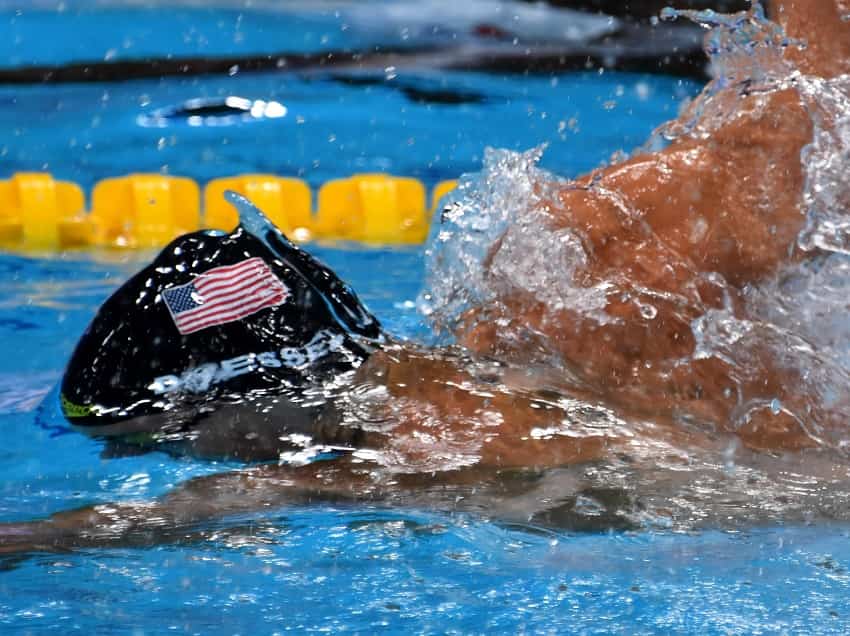
Caeleb Dressel has been having himself a monster week. It’s the summer of 2017, and the FINA World Championships in Budapest, Hungary are in the middle of being soaked and battered by Hurricane Dressel.
Having already taken down the American record leading off the gold-medal winning 4x100m freestyle relay, Dressel walks out behind the blocks for the final of the individual 100m freestyle.
The performance he puts on in Hungary over the week will go down as one of the best in the history of the sport. Seven gold medals, including three on the final night of the meet, where he rattles the world records in both the 50m freestyle and 100m butterfly.
But for right now, it’s the 100m freestyle.
Dressel goes behind his lane and quickly sheds his Team USA gear.
The announcer has already run through the names of the finalists. We are in that quiet lull before the first whistle.
Dressel flies through his pre-race routine, which includes a quick prayer to the right side of the starting block, and an explosive tuck jump that is powered by his 41-inch vertical leap.
He lands softly, and before he takes a step up towards his starting block, he loudly belts out, “Let’s go!”
He wasn’t talking to his competitors.
He wasn’t talking to the people back home, watching on the live feed.
Caeleb Dressel, in that moment, was talking purely to himself.
Swimmers talk to themselves. All the time. Some of it is obvious, as is the case when a swimmer says, “Let’s do this!” to themselves before they get up on the block.
The other kinds of self-talk are far less noticeable.
You know, the language you use with yourself in the quietness of your thoughts. When you tell yourself that you are so tired that you can’t work hard today, or that you will try your best tomorrow, or that you should take it one lap at a time. This self-coaching narration isn’t heard, but is reflected in your actions.
The self-talk that Dressel used that day on his way to churning out one of the fastest 100m freestyles ever swum (47.17, in case you were wondering), is better known as external self-talk.
Yup, I am talking about talking to yourself.
Here’s how to use external self-talk to power up your races, persevere when you are goggles-deep in a hard set, and improve your technique.
External self-talk and internal self-talk look the same, and a lot of the same language is typically used, but there is a key difference between the two that makes talking to yourself particularly advantageous.
By saying stuff out loud it helps us talk our way through a problem, or adversity, or high-pressure situations.
When researchers took a group of basketball players and had them try some different types of self-talk, the participants played better and faster when they were talking to themselves out loud. Self-talking out loud improved performance.
Which can seem a little silly.
But giving voice to your inner cheerleader gives you a sense of perspective you can’t get from just thinking about it.
External self-talk helps to uncouple you from the emotion of the moment, which can often get us carried away into anxiety, uncertainty, and doubt.
Using external self-talk in the water
Okay, research and elite swimmers using this stuff is cool, but how can we apply this to our regular day to day training and racing?
Here are a few ideas:
One of the benefits of cheering and rooting for your teammates, whether in the throes of a brutal main set of in the moments before a big race, is that often the advice applies equally to you.
“Come on guys, one more round, we got this!” isn’t just a platitude, but I would argue a form of verbalizing your own self-talk. (While also being a powerful way to impact group and team culture.)
If you watch American breaststroker Cody Miller’s YouTube channel (and you really should), you will notice how often is pulling for his teammates during hard sets. (“Come on, Gary!”)
If external self-talk sounds kind of weird to you and you want a way to ease into it, start by throwing some of that positive self-talk in the direction of your teammates.
Swimmers are always on the hunt for ways to maximize preparation and avoid choking on race day. My inbox is stuffed full emails asking for help managing stress and anxiety.
Taking a second or third person viewpoint when using self-talk can help reframe some of that stress and anxiety that is pulsing through your brain before a big race. The simple rephrasing of perspective gives you distance. You get a more rational outlook on what’s happening.
As opposed to saying—“I don’t quit!” or “I never fail!” you would switch it up to talking to yourself in the second or third—“You don’t quit!” or “Bobby don’t play that!”
Looks like word semantics, right? Switch a couple words around and woopty doo?
But researchers found that this simple change led participants to view future threats as challenges and less as threats. Which, if you are keeping chlorinated count at home, means less buckling under pressure in competition.
Here’s a better example that I think you can relate with.
Ever wonder why you can give great advice to your teammates and friends about how to recover after a bad practice or race? You calmly and rationally tell them to hang in there, remind them how hard they’ve worked hard, and that they will bounce back.
Contrast this to the emotionally charged self-talk you use when things go off the rails. When it comes to dealing with your own bad race your advice is far more judgemental and emotional. I suck. I totally failed. I will never achieve my goals.
Second and third person self-talk gives you some distance that gives you clarity and emotional detachment to help us make smarter decisions that aren’t so rooted in the feelings of the moment.
Notice something else about Dressel’s self-talk? It’s simple, vague and positive. He isn’t yelling I am the best freestyler in this field and I know it! or Don’t blow this race! Or I am going to swim a 47.1 or else I am a failure!
Just a simple, Let’s go.
Super basic.
Motivational self-talk works best when it is simple. You don’t need to come up with a Shakespearean sonnet describing how many thunder-claps you doth plan on raining upon your personal best timeth.
Similarly, make sure your self-talk is oriented towards achievement. Telling yourself stuff like: Don’t blow it! No one will like me if I swim slow! Don’t suck! points your thoughts and actions in the wrong direction.
Self-talk only really works if we believe it and if we make it a fixture of our training. Like any other mental training skill, the blade needs to be sharpened with consistency and practice.
The big benefit is that making awesome self-talk habitual will make the performance and mindset you want more automatic. That night before the 100m freestyle wasn’t the first time Dressel had used that exact phrase before a race. He has used it before.
You can help make things more consistent by splashing your environment with reminders of the self-talk you want to get more of.
I’m a big fan of writing my self-talk on my water bottle. This way it is always front and center when I am at the pool, so it’s impossible to miss and in the perfect spot for when doubt and uncertainty pop up.
Where self-talk can really benefit you is when things get tough in practice.
From personal experience I know how much sway the narration that is rolling in my head plays on how focused I am during drill sets, how solid my technique is, and how much effort I give during the main set.
External self-talk is one of those ways that you can box out the pain and agony that comes with pushing yourself in the water. You distract yourself by literally talking aloud.
I had a teammate back in the day who, between all-out reps, would mutter to herself in the gutter. Stuff like, “Come on, Jules!” and “You got this.”
The external self-talk kept her focused on persevering, and off the huffing and puffing and creeping soreness.
Motivational self-talk is a double whammy: you cut out negative thoughts at the knees by not giving them any mental space, and you pivot yourself towards more positive and productive thoughts.
There are two kinds of self-talk, and which one you use depends on what you are trying to accomplish in the water.
There is the motivational variety (which we have been mostly discussing here so far), that is designed to keep your head in the game, motivated and fired up. If your motivational self-talk is a movie, it’s Rocky, Gladiator and Miracle rolled into one. It’s ideal for competition and performance situations in practice (test sets, all out efforts, etc) where you don’t want to be overthinking what you are doing in the water.
There is also the instructional type, best used when you are trying to fix your technique or do something better with your stroke (“Snap your ankles! Kick with your hips! Pull with a high elbow!”).
Instructional self-talk is like a DIY video on YouTube that coaches you through a multi-step process. This kind of self-talk is analytical and detail oriented. We are assessing what we are doing, critiquing our form, and grading how we are doing.
Whatever it is you are trying to accomplish, if it’s swimming freestyle without over-rotating your hips, or push through that last round of a lactate set, line-up your self-talk with what you are trying to accomplish.
Self-talk doesn’t need to be overly complicated, so try not to overthink this fundamental mental training skill.
A lot of times, swimmers get hung up on trying to find the perfect or absolute best mantra or line of self-talk. There’s no perfect answer here, just what works well for you.
If you are stuck on trying to find self-talk that is believable and effective, look back at the times where you crushed it in the water and think about what you were telling yourself.
If it worked for you before, it will work for you again.
Write out the motivational pieces of self-talk and litter them within your environment. Say them to yourself quietly, mumble them into the gutter, and yell them out into the water bubbles while swimming.
Create instructional self-talk for the things you want to improve with your technique, start and turns. Roll the play-by-play on how you want your stroke to unfold as you are doing it.
And talk yourself into swimming faster than ever.

Olivier Poirier-Leroy Olivier Poirier-Leroy is the founder of YourSwimLog.com. He is an author, former national level swimmer, two-time Olympic Trials qualifier, and swim coach.
Olivier is the author of the books YourSwimBook and Conquer the Pool. He writes all things high-performance swimming and is passionate about helping swimmers, swim coaches, and swim parents master the pool.
His articles were read over 4 million times last year and his work has appeared on USA Swimming, SwimSwam, STACK, NBC Universal, and more.
He’s also kinda tall and can be found hitting noon-hour lap swims. You can learn more about Olivier here.

Going to swim practice feeling like a struggle? Here are some proven strategies and tips to conquer today’s swim practice, even though you might not be feeling it.
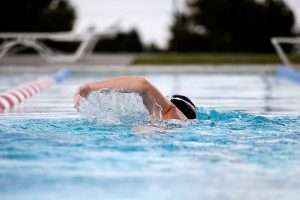
Feeling stuck with your journaling? Here are some journaling prompts for swimmers to build self-awareness, confidence, and help swimmers maintain perspective over the course of the swim season.

Swimmers invest a lot of time in the water over the course of the season. The two-a-days, long swim meets, and the perpetual sogginess can be difficult to bear for even the most motivated of swimmers. In the moments when you are struggling with commitment or motivation, it’s a great

Each day at the pool, you have some decisions to make, weighing the trade-offs. Here’s how to choose faster and better swimming.
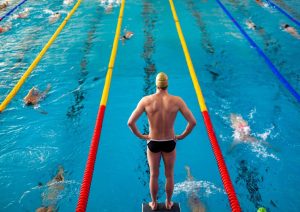
Motivation or some variation of it is by far the most common query I get from readers of my weekly newsletter. “How do I get motivated to work hard?” “How do I get motivated to do the things necessary for my goals?” “Why is it so hard to get motivated
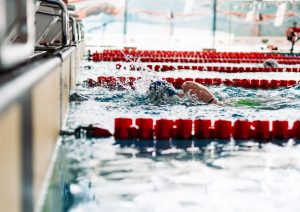
During my noon-hour swim today, my mind wandered back to my age group days. The swimmers I trained with. The swimmers I raced against. My heroes growing up. And the resulting big box of ribbons and medals collecting dust under my bed. Over the years, I realized, I’d learned a

LANE 6 PUBLISHING © 2012-2024 · PRIVACY POLICY · RETURN POLICY · TERMS OF SERVICE · AFFILIATE DISCLOSURE